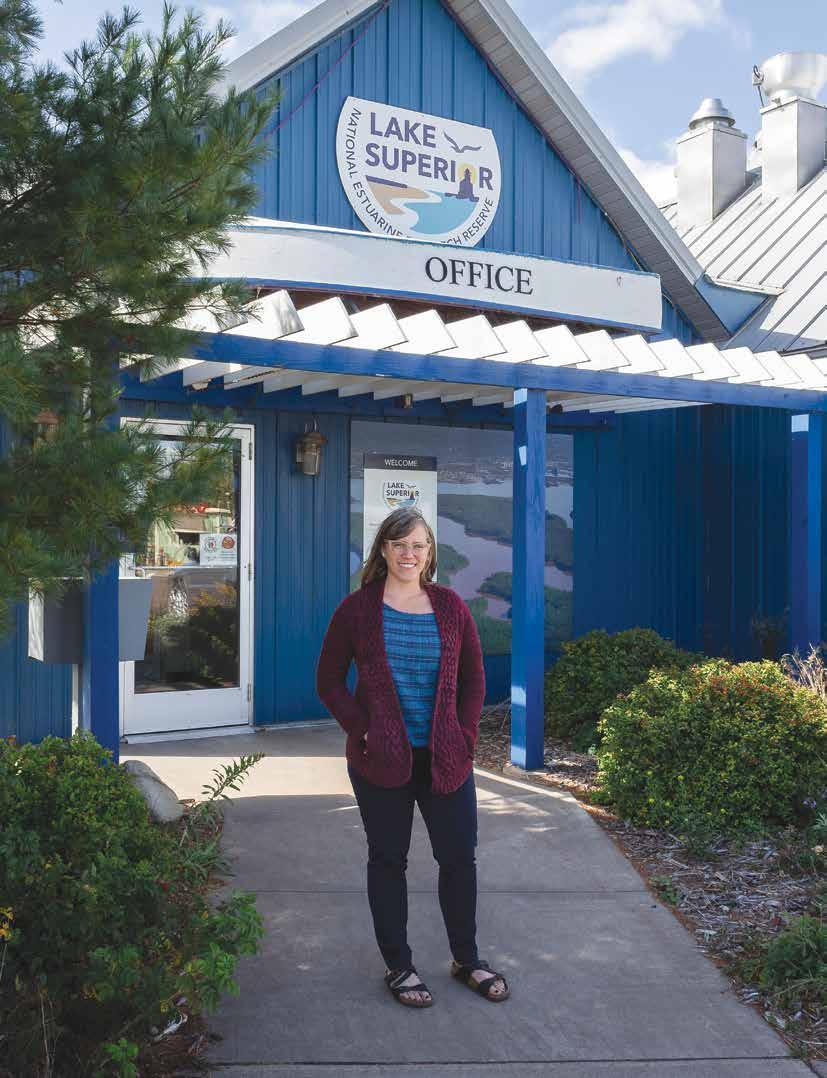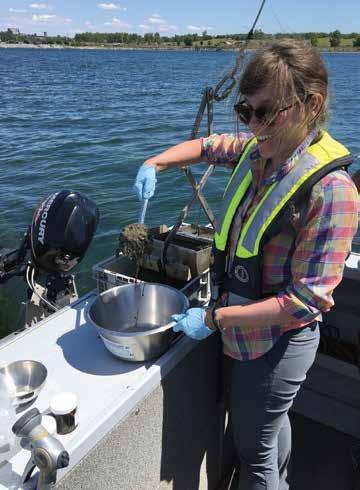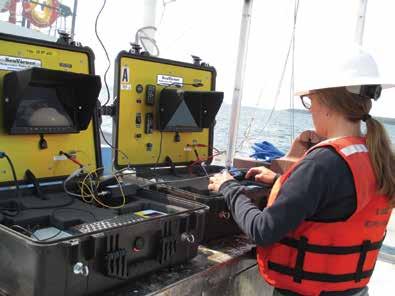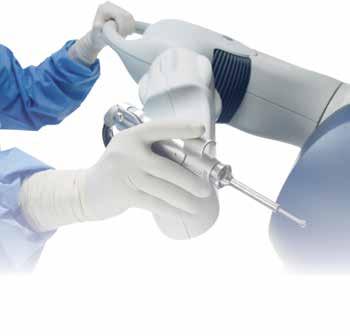
4 minute read
Molly selectedWick for national research fellowship
When thinking about how humans interact with the environment, there is usually an emphasis on how human activity impacts nature and less of a focus on how the natural world impacts us. Molly Wick, a doctoral candidate at the University of Minnesota Duluth, hopes her research through the Margaret A. Davidson Fellowship will help people understand the whole picture.
Wick grew up near Two Rivers, Wisconsin, and spent her youth camping, swimming in Lake Michigan and exploring Point Beach State Forest. She first took an interest in ecology in high school after a class and internship at a nature center.
“I was always interested in the environment and the beauty and mystery of what is going on in the natural world,” Wick said.
This interest in the natural world inspired her to study environmental science at the University of Minnesota-Twin Cities. There Wick discovered a new interest in geology and earned her bachelor’s degree in the subject.

Wick continued to study geology at the University of New Mexico in Albuquerque, receiving her master’s in earth and planetary science in 2010. Her initial plan was to pursue a doctorate on the topic and continue her research, but her interest had begun to fade.
Being as she graduated as the economy was still recovering from the Great Recession, it was difficult for Wick to find open positions in the geology or environmental science fields. After working at a yarn store for a year, Wick decided to go back to school and pursue a second master’s degree at the University of Minnesota Duluth in water resource science.
“One thing, living in Albuquerque, that I missed about living in the Midwest was the lakes and the rivers and water being everywhere,” she said.
At UMD, Wick worked closely with Karen Gran to study erosion in streams along the North Shore of Lake Superior, primarily focusing on Amity Creek and the French and Talmadge rivers.
After the 500-year flooding event of 2012, Wick helped with damage assessments with the Minnesota Pollution Control Agency, which she described as a great learning and networking opportunity.
In 2013, after graduating with her second master’s, Wick went on to work for the Wisconsin Department of Natural Resources in Superior, coordinating habitat restoration projects along the St. Louis River in conjunction with the St. Louis River Area of Concern Program.
“That is when I learned a lot about how decisions are made,” Wick said, “balancing the science with what is
Continued on page 12
economically and politically viable and figuring out what can be done.”
When that position came to a close, Wick began a fellowship through the Oak Ridge Institute for Science & Education at the U.S. Environmental Protection Agency’s Great Lakes Toxicology and Ecology Division in Duluth.
During her four years as a fellow, Wick assisted with ecological assessments of the connecting rivers of the Great Lakes, determining what thresholds are relevant for addressing management needs.

This project piqued her interest in how humans can objectively study and measure environmental impacts without their own viewpoints getting in the way.
“We’re not just doing this for the sake of the ecosystem, we’re doing it because we get some benefit to having a healthy ecosystem,” Wick explained.
This question caused a shift in how Wick thought about resource management, and inspired her to return to school once again to pursue a doctorate studying these sorts of questions around water resource management.
Wick developed a proposal for the Margaret A. Davidson Fellowship and was the first to be selected for the competitive national program.
Through the fellowship, led by the National Oceanic Atmospheric Administration, Wick is working with the Lake Superior National Estuary Research Reserve to study the benefits people receive from the improvement of the St. Louis River ecosystem.
“There’s this implied benefit to people of any sort of management that we do with the environment,” Wick said, “but those benefits that people get are not usually defined in a given project or policy.”
Wick explained that usually projects are driven by biophysical markers such as water quality or sediment contamination. To measure a project’s impact on humans is more complicated as there has not been a standardized way to do so.
Wick’s research will help determine what indicators are useful and relevant for determining the ecosystem’s impact on human health and wellbeing.
For example, if a river is clean enough for the surrounding population to swim in it, those people get to reap the physical and mental benefit of swimming that they would not have had if they did not have access to clean water.
“Those types of benefits can vary a lot depending on what system you’re looking at or what management you’re considering,” Wick said, noting that measuring recreational benefits will look much different than benefits associated with fishing, wild ricing, or drinking water.
Wick hopes her results will be useful in influencing policy and management of water resources and contribute to better conversations about the environment with the public once people are able to see themselves reflected in the data.
Wick is most excited to work with the large scientific network this fellowship provides, working with advisors from the EPA and UMD’s Natural Resources Research Institute. The Reserve is operated by the University of Wisconsin Madison Division of Extension and is located on UW-Superior’s campus.

Additionally, the research she will be working on intersects with her interests in climate change and environmental justice.
“Any investment the public makes in the environment should help work toward a more equitable world, and at the very least, not contribute to inequities,” she said.
When not researching, Wick spends much of her time outdoors, paddling, hiking, rock climbing and skiing.
“This is the perfect place to live if you like nature,” Wick said. D
Abigail Blonigen is a Duluth freelance writer and photographer
Transformingjoint Replacement With Mako Robotic Arm Assisted Technology

Wh en yo ur joi nt sw ear ou ta nd need re pl ac em en t, co nsi der an inno va ti ve ap pr oach. La ke wa lk Su rg ery Ce nt er no w of fe rs join tr eplac em en tu ti lizing Ma ko Sm artr obo tic s™ te ch nolo gy– en abl in gy ou to ha ve am or ep er sona liz ed and pr ec ise su rg ic al ex perienc e. Ta lk to yo ur sur ge on to see if Ma ko is th er igh to pt ion fo ry ou .
1420 Lo ndon Ro ad ,D uluth |2 18-728-0650 lak ewa lk.c om










